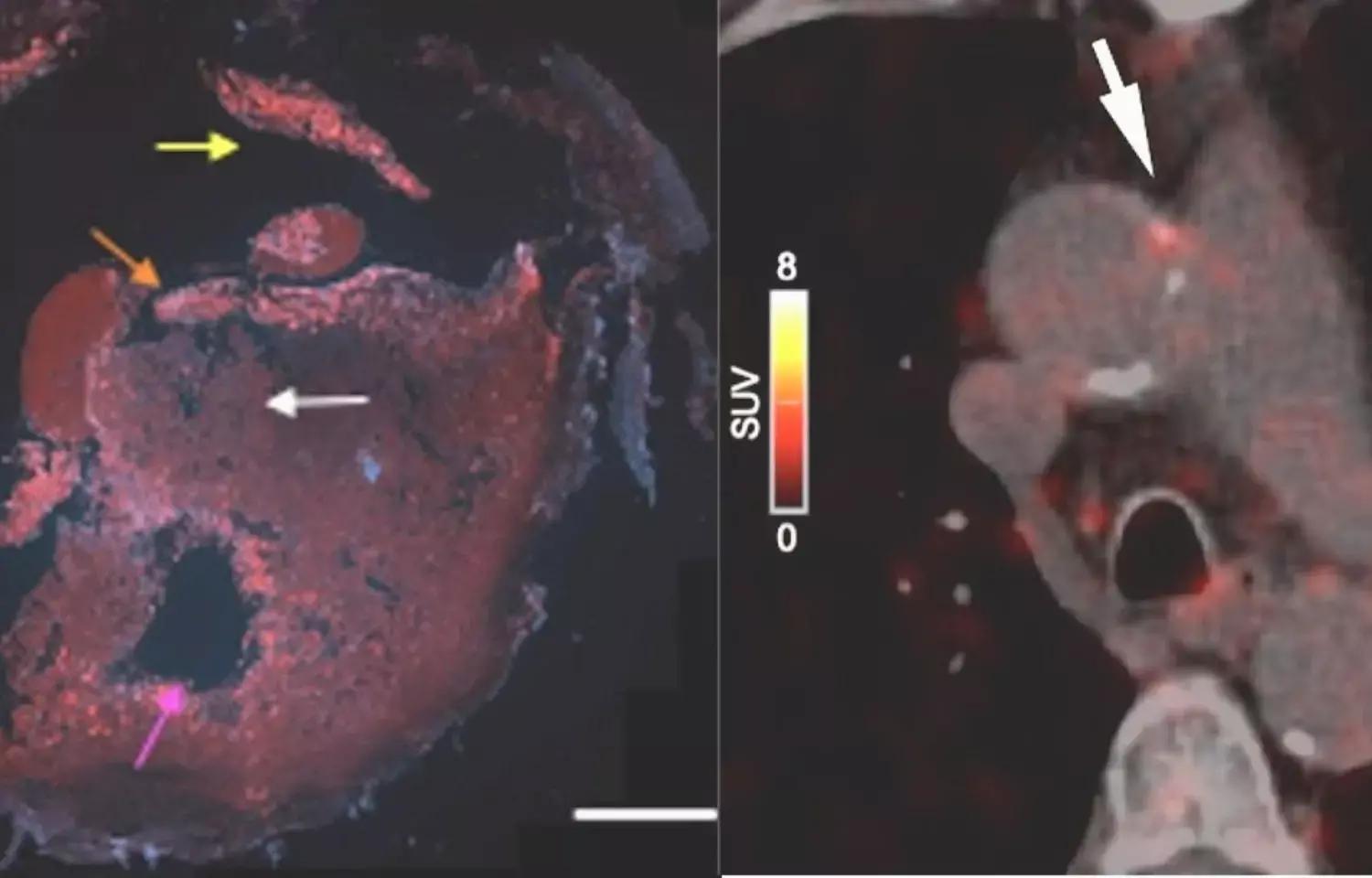Denmark: New Approach for Early Diagnosis of Atherosclerosis
Results from a recent study published in the journal Atherosclerosis could pave the way for a new approach for the early diagnosis of atherosclerosis. The study found that a novel PET radiotracer can visualize immune cell activity in the artery walls of the patients.
"Urokinase-type plasminogen activator receptor (uPAR) is expressed abundantly by mononuclear phagocyte system (MPS) cells in the atherosclerotic plaques and can be visualized by the experimental positron emission tomography (PET) tracer [64Cu]Cu-DOTA-AE105," Harshvardhan A. Khare, University of Copenhagen, Copenhagen, Denmark, and colleagues wrote in their study. "This may help in non-invasive detection of extracellular matrix (ECM) remodeling during atherogenesis."
uPAR is shown to be associated with the degradation of the extracellular matrix and cancer aggressiveness. However, there is no clarity on its role in arterial atherogenesis as a molecular imaging target. Dr. Khare and colleagues, therefore, aimed to non-invasively visualize uPAR expression in atherosclerosis by a novel uPAR-targeting PET tracer.
Molecular biology was used to examine uPAR expression by analyzing human atherosclerotic plaques and cultured cells. The researchers then performed a retrospective analysis on patients who underwent combined PET/CT (n = 10) to measure [64Cu]Cu-DOTA-AE105 uptake in five large arteries, divided into a high and low-risk group based on coronary artery calcium score (CAC score).
Findings of the Study
- The in vitro assay for THP-1 monocytes displayed a significantly upregulated uPAR expression upon stimulation (5.2-fold upregulation) by single-cell flow cytometric analysis.
- Freshly excised human atherosclerotic plaques underwent flow cytometric and microarray analyses manifesting 73.9 ± 2.9% of mononuclear phagocyte system (MPS) cells expressing uPAR and had a greater than 7-fold higher gene expression of plasminogen activator urokinase receptor (PLAUR), integrin subunit alpha X (ITGAX), and cluster of differentiation 163 (CD163).
- The tissue-to-background ratios (TBRmax) in five large arteries showed a higher [64Cu]Cu-DOTA-AE105 uptake in the group with a high CAC score compared to the group with low CAC score (2.4 ± 0.1 vs 1.7 ± 0.1), significantly higher in the ascending aorta (2.7 ± 0.1 vs 2.0 ± 0.1) and the abdominal aorta (3.2 ± 0.2 vs 2.0 ± 0.2) by a non-parametric Mann-Whitney test.
The researchers provided in vitro and ex vivo evidence to confirm that uPAR can be visualized in vivo non-invasively and is associated with vascular remodeling resulting from ECM restructuring occurring during the atherosclerosis progression.
Reference
The study titled, "In vivo detection of urokinase-type plasminogen activator receptor (uPAR) expression in arterial atherogenesis using [64Cu]Cu-DOTA-AE105 positron emission tomography (PET)," was published in the journal Atherosclerosis.
DOI: https://doi.org/10.1016/j.atherosclerosis.2022.03.026
Keywords
Atherosclerosis journal, atherosclerosis, PET, positron emission tomography, radiotracer, early diagnosis, molecular imaging, mononuclear phagocyte system, urokinase-type plasminogen activator receptor, Harshvardhan A Khare, atherogenesis, extracellular matrix



0 Comments
Post a comment
No comments yet. Be the first to comment!